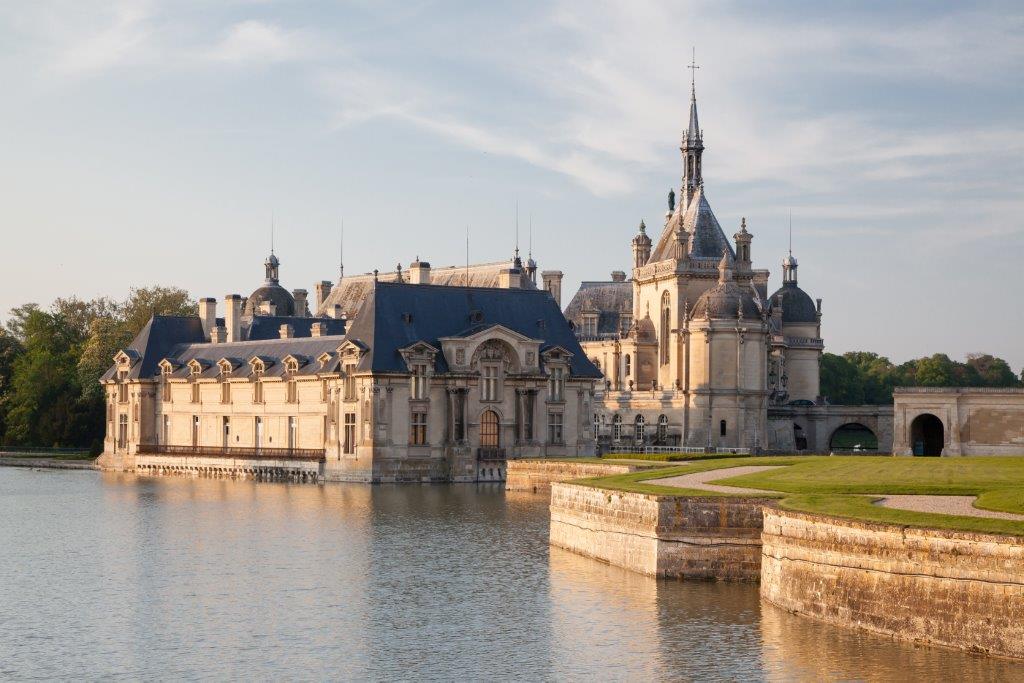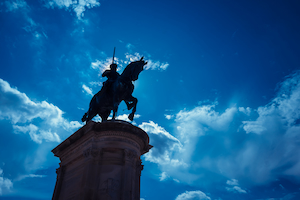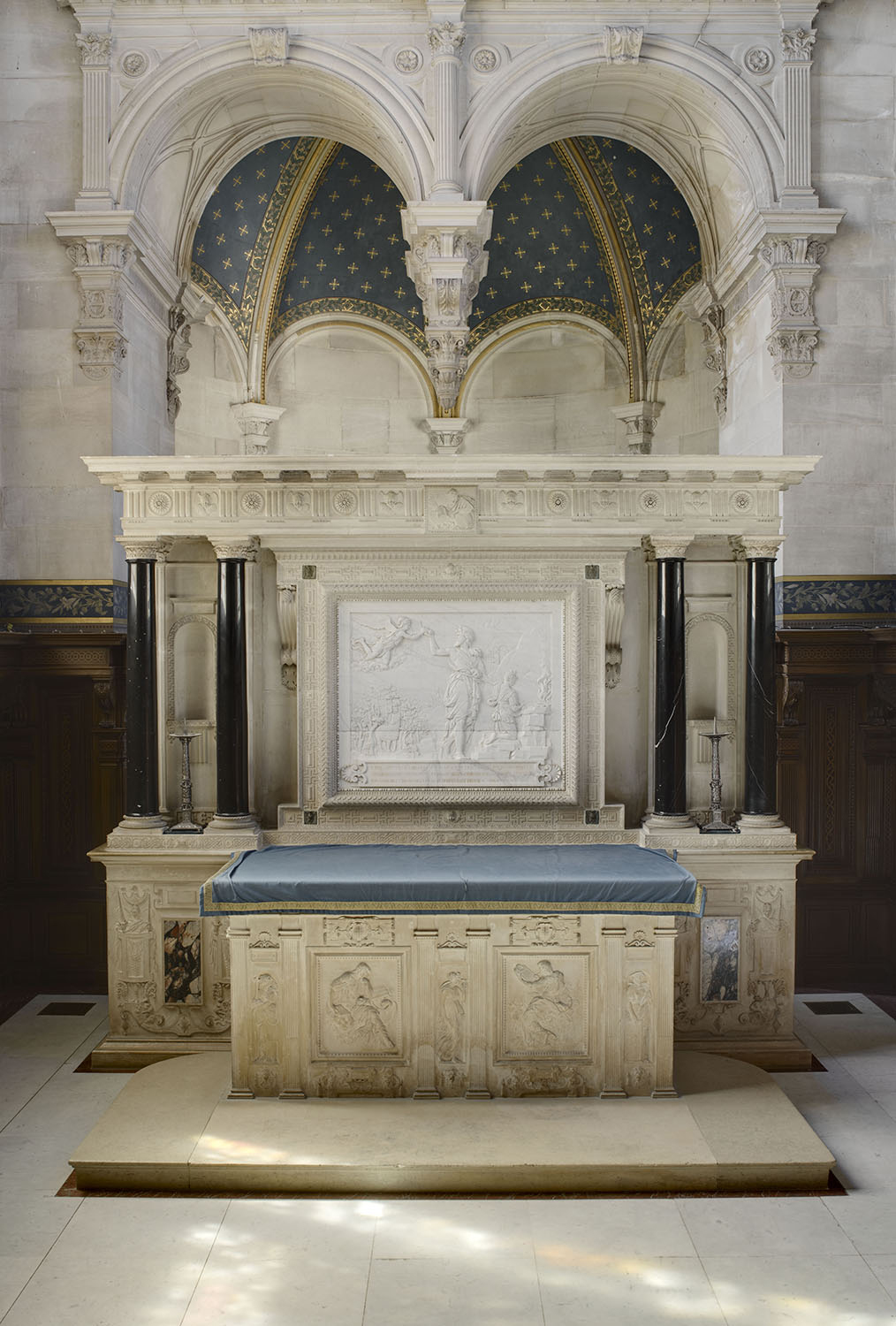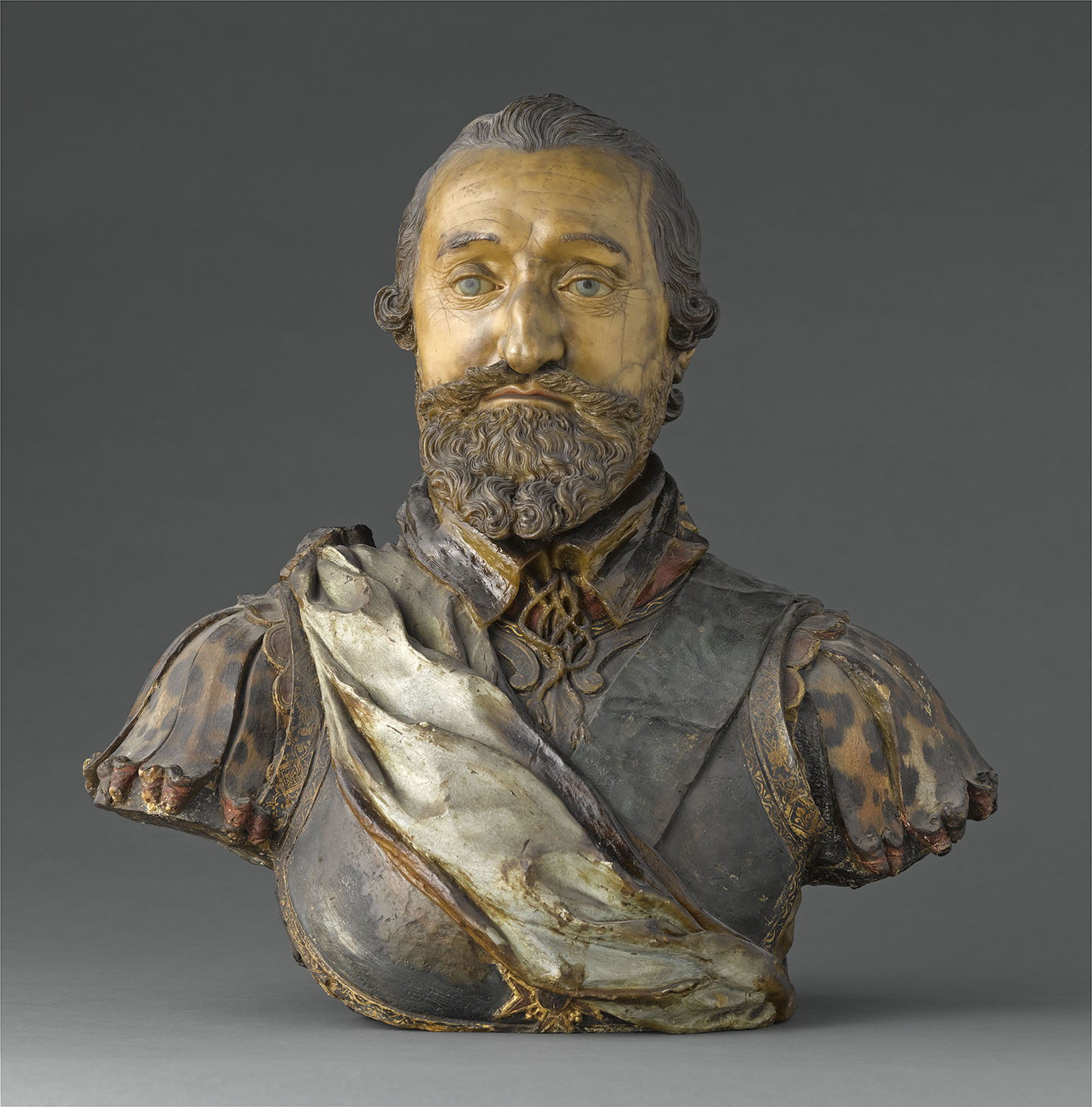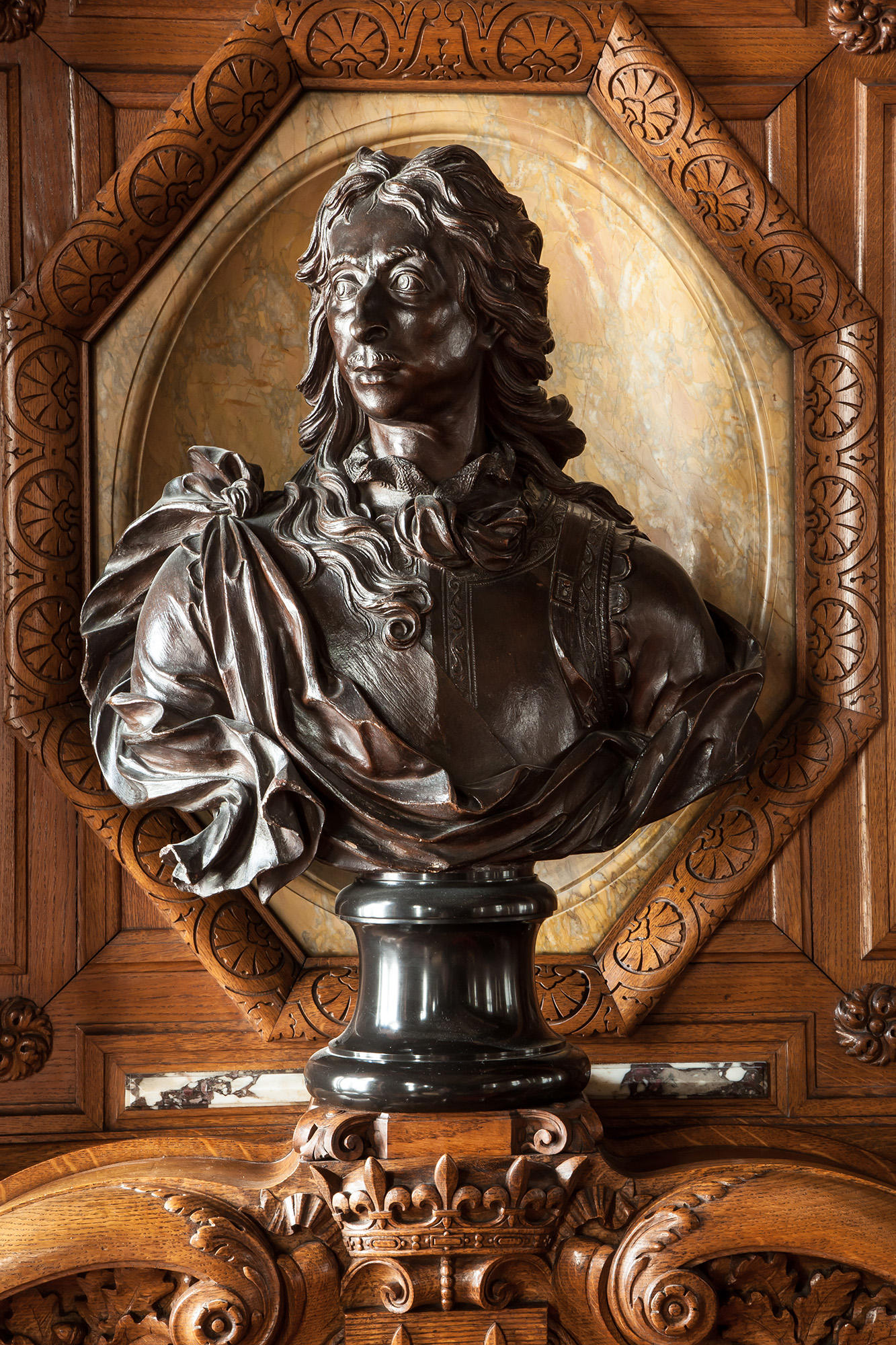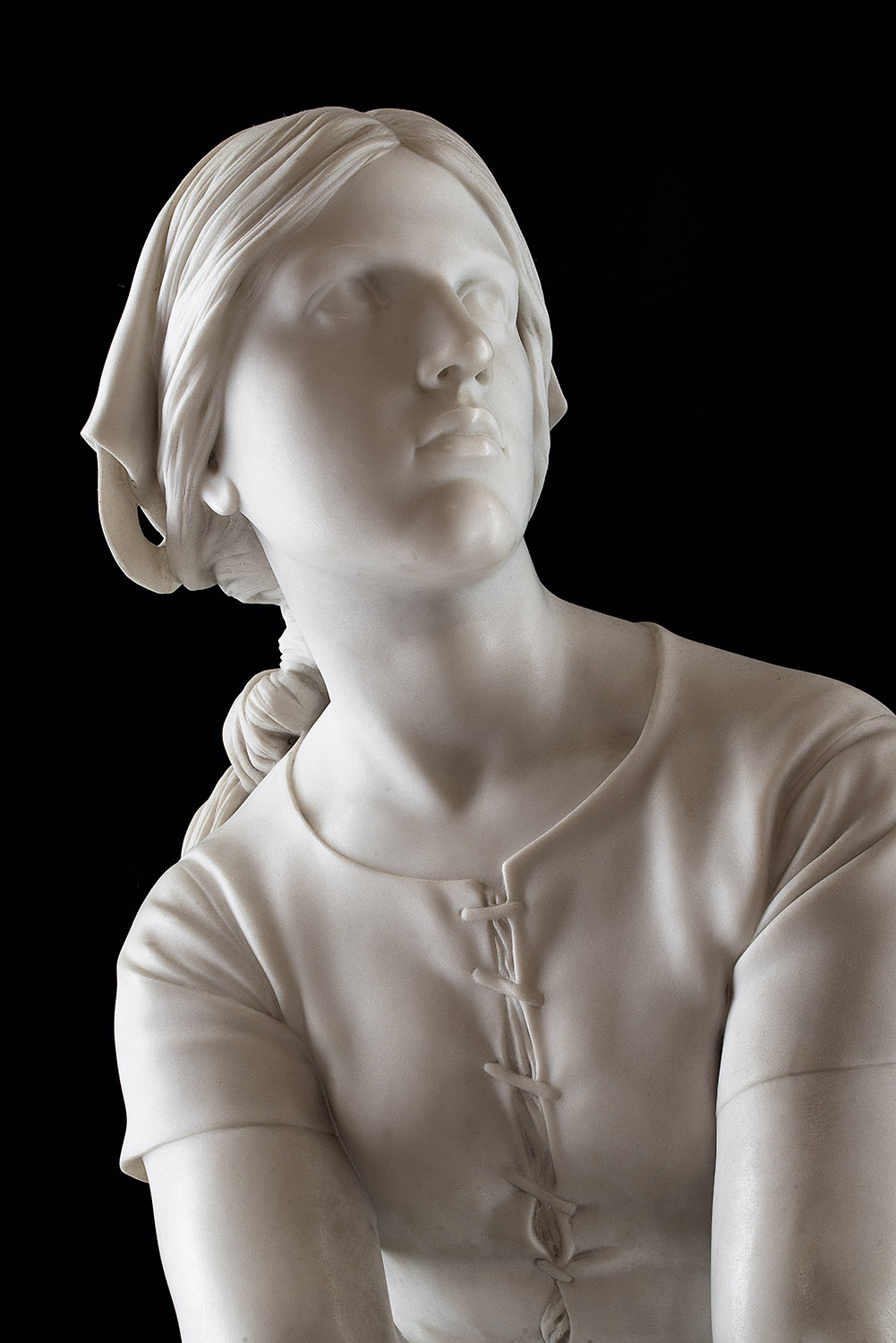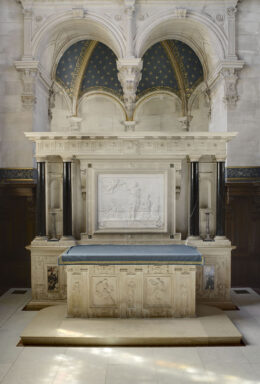
Ecouen altar and altarpiece
Anonymous
1540-1550
Chapel
Ecouen altar and altarpiece - 1540-1550
Artist : Anonymous
This altar once occupied the chapel in the Château d’Écouen, which, along with Chantilly, was one of Constable Anne de Montmorency’s residences. The front and small sides of the altar show the four evangelists, separated by a decor of niches featuring the three theological virtues – Faith, Hope and Charity – and by pilasters inspired by antiquity but adapted to suit a French style by Jean Goujon’s entourage. The sculpted altarpiece shows the sacrifice of Isaac in bas-relief, an uncommon scene for an altarpiece, but translating the constable’s taste for Old Testament iconography, in a troubled religious context. Dismantled during the Revolution, it was installed in Chantilly in the chapel designed for the Duke of Aumale, built between 1875 and 1885.
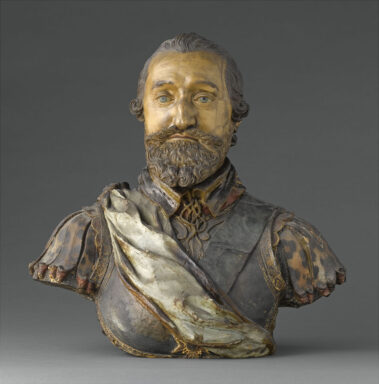
Bust of King Henri IV
Guillaume Dupré
1610
The Psyche Gallery
Bust of King Henri IV - 1610
Artist : Guillaume Dupré
This polychrome wax bust of King Henri IV was already in Chantilly in 1740, when the Duke of Bourbon died; it was in the prince’s suites, in the corner room he used for audiences. Confiscated during the Revolution, it was returned to the princes of Condé during the Restoration. It is attributed to the sculptor and medal engraver Guillaume Dupré, a protestant and son-in-law of the reformed sculptor Barthélémy Prieur. With Mathieu Jacquet, known as Grenoble, he was tasked after the king’s death with moulding his mask to make a funeral effigy. According to some historians, th one made by Jacquet, which was chosen, must have been lost or destroyed, and this one is therefore by Guillaume Dupré.
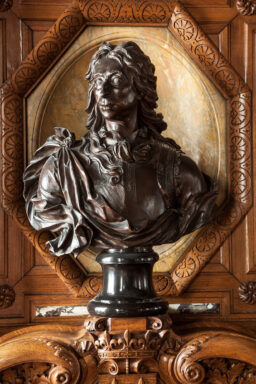
Louis II of Bourbon, Prince of Condé, cuirassed bust
Antoine Coysevox
1688
The Reading Room
Louis II of Bourbon, Prince of Condé, cuirassed bust - 1688
Artist : Antoine Coysevox
This sculpted portrait of the Great Condé, rebel and heroic victor at Rocroi, translates the full splendour of this character. The princely carriage of the head, the disdainful look, prominent cheekbones, hooked nose, and hair that seems to be moving on his shoulders, allude to the imposing personality of this prince by blood, cousin of Louis XIV who was an insatiable warrior and rebel, as well as an enlightened patron. Coysevox executed several portraits of the Great Condé. It is likely he made this bust when the prince was alive. He appears younger than in the bronze bust in the Louvre Museum, although it is close to this one and was commissioned posthumously by his nephew, the Prince of Conti, in 1688.
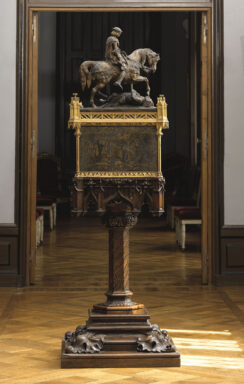
Joan of Arc on horseback crying at the sight of a wounded Englishman
Marie of Orleans, Duchess of Wurtemberg
1834
The Small Gallery in the Logis
Joan of Arc on horseback crying at the sight of a wounded Englishman - 1834
Artist : Marie of Orleans, Duchess of Wurtemberg
Daughter of Louis-Philippe and sister of the Duke of Aumale, Princess Marie of Orleans was a pupil of the painter Ary Scheffer, who first taught her drawing. But Marie revealed herself in the art of sculpture. A Romantic artist, her taste for the neo-Gothic style is visible in her religious and historic works. Contrary to the usual iconography depicting Joan as a war leader, Marie of Orleans chose to show Joan crying at the sight of a wounded Englishman. Her interest for this historic figure began when she read the Chronique de la Pucelle by Guillaume Cousinot, a book recommended by Jules Michelet, who was her history teacher. Marie was marked by Joan’s religious and compassionate nature. Having caught pulmonary tuberculosis, the artist princess died at the age of 25.
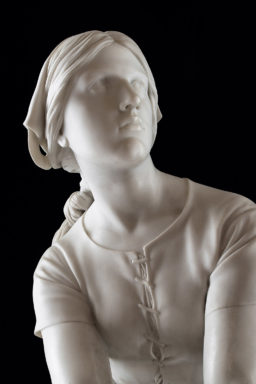
Joan of Arc listening to the voices
Henri Chapu
1873
The Rotunda / The Gallery of Painting
Joan of Arc listening to the voices - 1873
Artist : Henri Chapu
A heroine that was rediscovered with the nationalist exaltation of the 19th century, Joan of Arc was the subject of numerous works at that time, most often in armour. Here Henri Chapu decided to show her when she had her calling, upon hearing the voices that incited her to fight for King Charles VII to take back his kingdom, which had been considerably reduced by English claims. He sculpted her in the figure of a shepherdess, rendering her fervent expression, combining surprise and determination. The original of this marble sculpture, based on an 1870 sculpture in plaster, was presented at the 1872 Salon (Orsay Museum). It has been the subject of a considerable number of copies. This work greatly contributed to Chapu’s renown. He became president of the Académie des Beaux-Arts in 1889.

